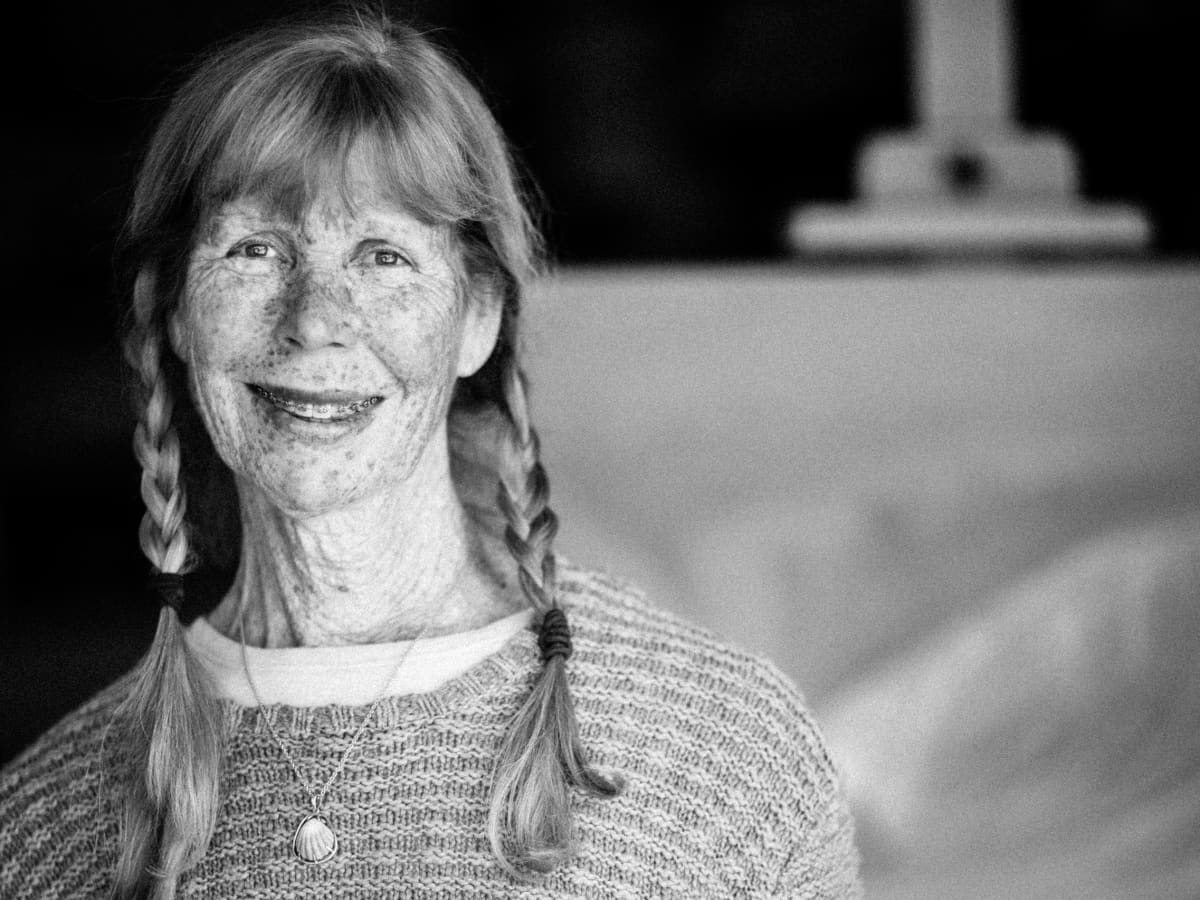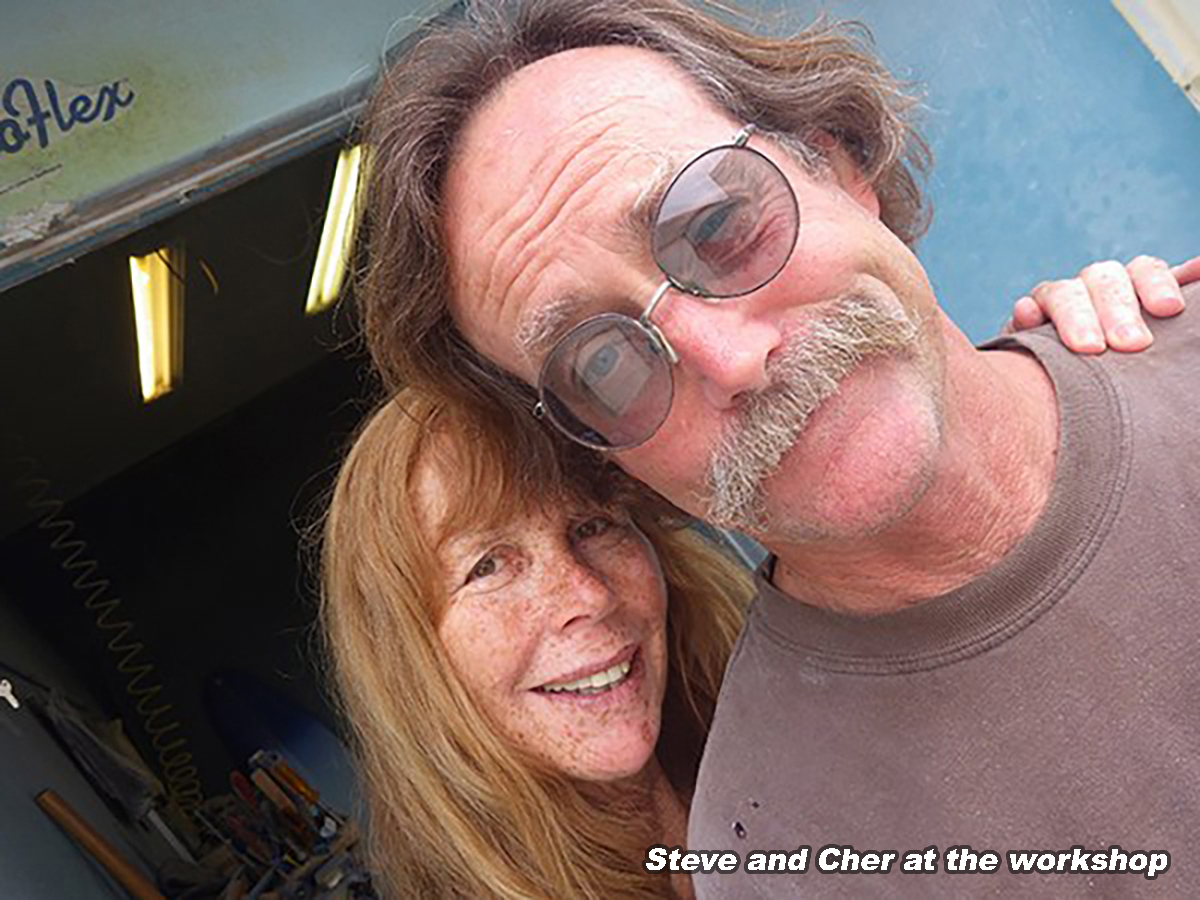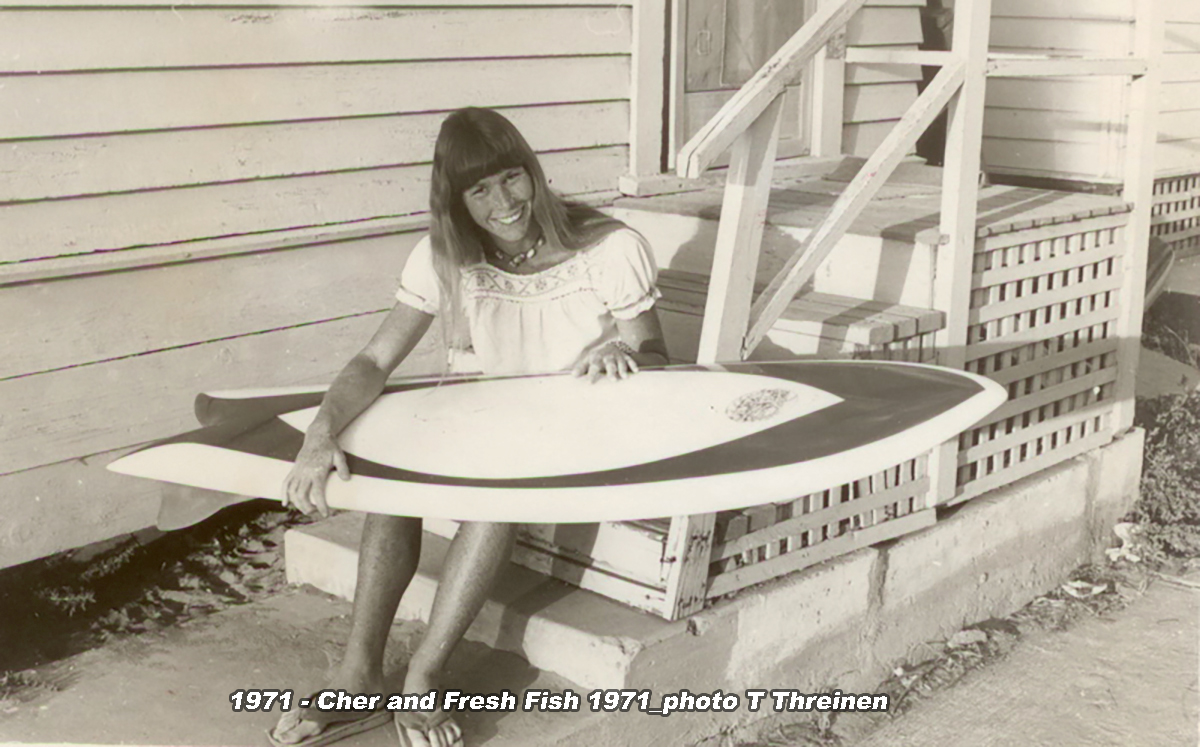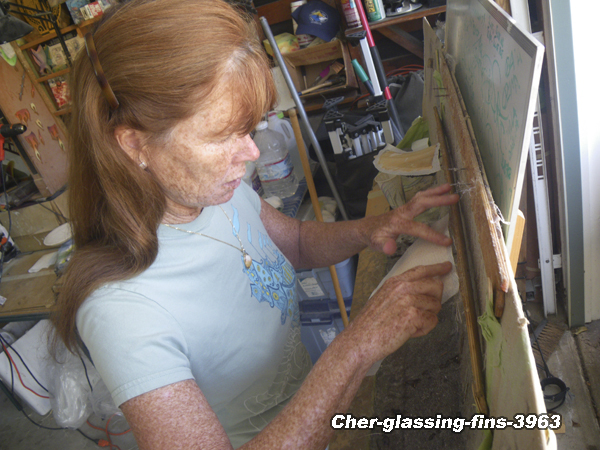International Surfboard Builders Hall Of Fame Inductee Details
Sadly, over the years websites that have links here will change or be abandoned from the time that they were posted here so the will not be found.
| Inductee Name Cher Pendarvis | Event Year 2024 | Inductee Location Point Loma, San Diego | Inductee Contact https://www.pendoflex.com/ |
| Inductee Brand | 
|
||
| Inductee Boardshop pendoflex.com |
Boardshop Link https://www.pendoflex.com/ |
| Inductee Bio
Cher Pendarvis Beginning in the late 1960s - early 1970s, I began making my own surfboards, start to finish, working by myself and also collaborating with friends. (I still make boards, working alongside my husband Steve). In 1950, I was born in San Francisco within sight of the ocean and when I was five, Mom and I moved to Oahu, where Dad was deployed on a ship in the Pacific. Living in Honolulu in the 1950s was a highlight of my young life, and this is where I first saw surfing. I was mesmerized by the grace of the surfers as they glided toward shore singly or sharing waves together. Mom and I enjoyed playing in the waves. I dreamt of surfing from that time on . . . On Easter weekend in 1964, a kind lifeguard let me paddle out on his hollow wood Tom Blake style rescue board and I paddled out and rode my first wave standing. My stepfather was against me surfing, and so I had to find my own way to the beach. A year or so later, I began teaching myself on borrowed boards that guys kindly let me paddle out. I learned to surf on my own and by watching others. Riding waves was a dream come true! To earn my own first board in 1966 (a 9' 7" had been broken in half and repaired), I learned to patch dings at a little surf shop and traded a few months work for the board, it was $45. This board weighed about 30 pounds, and I walked about three miles to the beach carrying it in all kinds of weather. Some years later, while surfing Rincon, I was fortunate to see George Greenough climbing and dropping on his knee machine (using the whole wave face and cutting back.) It goes without saying, George has inspired many! Soon after getting home to Ocean Beach, I began sketching a template for my first board on cardboard. My experience with ding repair helped me be comfortable with the materials needed to build a board. Also, I was a young artist who had worked with wood and clay sculpture. I had an interest in making my own boards and was fortunate to watch a few friends shape and glass, and I learned how to strip the fiberglass off an old board. After measuring dimensions, I used a pencil to sketch the template. Then, I worked with hand tools - a saw, surform and sanding blocks to shape my board. The first board was 6' 1" with a roundish nose with a slight hull entry and a rounded pin tail, and neutral rails. The shape was crude, but I loved the shaping and glassing experience and it was exciting to discover how the board felt on the waves. In the early days, foam was hard to come by for individual surfboard makers, and so we sometimes used foam from old scavenged boards. For the thick edge boards, we used refrigeration foam from Ridout Plastics. Also in the early days, fiberglass and resin for glassing and fin making were purchased at a local marine supply shop. In the early 1970s, supplies became more easily available for individual surfboard makers when Mitch opened his supply shop in La Jolla, and John Kies opened Coast Supply in Cardiff. My early boards were experimental ideas that I wanted to try, various Fish shapes inspired by our good friend Stevie Lis, innovator of the Fish, single fins (including my first board that was inspired by GG, as well as a couple of edge boards that were inspired by our creative friend Bunker Spreckles and innovator Bob Smith (Imhoff) who had made the first edge boards for Bunker. These boards were the first down railers ever made and inspired Bob McTavish, Dick Brewer and Mike Hynson. You may have seen my article on Edgeboards that was in the TSJ issue 26.1. "Edge Boards and the Mysterious Mr. X" The Quest for Speed at the Dawn of the Shortboard Revolution https://www.surfersjournal.com/product/edge-boards-mysterious-mr-x/ Also, you may have seen my feature profile honoring our friend Stevie Lis that was published in TSJ 20.1. For a logo on my early boards, I would do an ink drawing on the sanded hot-coat and then gloss over it. My budget did not afford silk screen logos, as I was a college student just making ends meet. I have a photo of one of my early logo drawings. In the early 1970s, I was fortunate to have inspiring surfing and board builder friends. I worked by myself and alongside friends on experimental boards. Some encouraging friends who invited me to watch them shape when they shaped a board for me during the early 1970's were Thomas Threinen, Skip Frye, Warren Brown and Steve Lis. Thomas Threinen and I shaped some boards together and I glassed the boards and made the fins. During those years, to make a new board, I had to sell a board to earn materials to make the next board. I earned income from various surfboard-making tasks, to help earn my way through college. For example, I glassed boards for others - my "Big Dog" hard core guy surfer friends, and also designed and made fins that I sold. Boards that I made were sold to friends. Occasionally (in the early to mid 1970s) boards that I made with friends were sold in Sunshine Surf Shop in Ocean Beach. For one of my edge boards, I made twelve fiberglass fins (including my own fin layup sheet) that could fit into a long box, and enjoyed experimenting with small keel fins and an early boomerang style fin. With the very hard down rails, we could ride a very small fin and go fast down the line! Also in the early 1970s I worked with a couple of friends - Thomas Threinen and Mike Sheffer - making Fresh Fish surfboards. Jimmy Blears won the 1972 World Championships on a keel fin Fish that I helped make. I made the fiberglass fins, and helped with the glasswork. This Fish was shaped by our good friend Mike Sheffer who was a close friend of Jimmy's. We made the Fish for Mike and Jimmy loved riding the Fish and surfed it to his 1972 World Contest win!! Regarding the period from the mid 1970s to early 1980s, I worked at Surfing magazine (1974 - 1979) as Art Associate when it was a bi monthly. During this period, I still made 1 - 2 boards a year. In the mid - 1970s, I was riding my self - made 5' 5" fish and met Mike Casey out surfing. Soon, Mike introduced me to Tony Channin, and for 15 years, I was the only female surfer on his inspiring surf team. Tony said he appreciated the creative ideas in a self-made fish that I had showed him. I worked with master shaper Mike Casey to design the boards that I rode and Tony told me that I sold more boards for him than his entire team combined. At Channin, I learned a lot from master shaper Mike Casey and Sam Cody, pin liner extraordinaire and glosser. I was the only woman on the surf team and at the factory. Also, I designed and hand-inked logos for Channin and also Donald Takayama, who was also shaping at the factory. The oval Surfboards by Donald Takayama logo that I designed with the flowers is still in use! We still have the 50+ year old Cereus cactus used as a reference for the flower drawing! In 2012, I was honored to have one of my surfboards and story included in the spectacular California's Designing Women exhibition at the Autry Museum in Los Angeles, during which I received the 2012 Henry Award for a surfboard that I had designed in the late 1970s. It had taken years for the curator at the Museum of California Design to assemble the show, as he searched for women designers in various areas of design from furniture, to ceramics, clothing, graphic arts and more. My surfboard was the only surfboard featured in the show. I'm grateful to the kind folks at the Surfing Heritage Foundation for referring me to the curator when he asked about early women shapers and surfboard builders. Regarding the current boards that Steve and I build and sell, all of the boards are one of a kind, custom and shaped by hand. We accept orders via the phone, email, text, web site messages (pendoflex.com) and via social media, Instagram (under my name Cher Pendarvis) and Facebook business page (Pendoflex Surfboards). Folks can contact us and request to order a custom board, and we begin the order with a detailed phone call or a visit at the workshop to discuss the customer's needs. When a deposit is given, we begin the order. If the customer is out of state of in another country, etc., I email photos of the template and dimensions of the board and then we converse on the phone. Both Steve and I enjoy interaction with the customers, as we want to build the absolutely best board for them that we can. Folks pick up boards from the workshop, and for those far away, we organize shipping. Currently we're working on a five board order from Japan that a shop owner and friend over there organized for us. Each of the five is a custom order from an individual - repeat customer, who we've made boards for before. To this day, I'm grateful for all of the wonderful surfing and board building experiences in my life. I still enjoy building a surfboard start to finish and appreciate working alongside my inspiring husband Steve. Aloha! | |||
| For the complete biography, go to: Cher Pendarvis | |||

Thanks to: Cher for the photo | |||
Links Cher - Steve Pendarvis (@cherpendarvis) • Instagram photos and videos Words of Wisdom from Shaper Cher Pendarvis -%%sitename%% - Surfer |

































